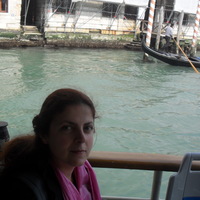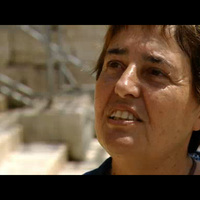Books by Oren Margolis
Aldus Manutius: The Invention of the Publisher (Renaissance Lives, Reaktion Books), 2023
Aldus Manutius is perhaps the greatest figure in the history of the printed book: in Venice, Euro... more Aldus Manutius is perhaps the greatest figure in the history of the printed book: in Venice, Europe’s capital of printing, he invented the italic type and issued more first editions of the classics than anyone before or since, as well as Hypnerotomachia Poliphili, the most beautiful and mysterious printed book of the Italian Renaissance.
This is the first monograph in English on Aldus Manutius in over forty years. It shows how Aldus redefined the role of a book printer, from mere manual labourer to learned publisher. As a consequence Aldus participated in the same debates as contemporaries such as Leonardo da Vinci and Erasmus of Rotterdam, making this book an insight into their world too.

Overview
Description
Table of Contents
Author Information
Cover
The Politics o... more Overview
Description
Table of Contents
Author Information
Cover
The Politics of Culture in Quattrocento Europe
René of Anjou in Italy
Oren Margolis
Oxford Historical Monographs
Description
The poet-king without a throne appears here in an entirely new light. In The Politics of Culture in Quattrocento Europe: René of Anjou in Italy, Oren Margolis explores how this French prince and exiled king of Naples (1409-1480) engaged his Italian network in a programme of cultural politics conducted with an eye towards a return to power in the peninsula. Built on a series of original interpretations of humanistic and artistic material (chiefly Latin orations and illuminated manuscripts of classical texts), this is also a case study for a 'diplomatic approach' to culture. It recasts its source base as a form of high-level communication for a hyper-literate elite of those who could read the works created by humanist and artistic agents for their constituent parts: the potent words or phrases and relevant classical allusions; the channels through which a given work was commissioned or transmitted; and then the nature of the network gathered around a political agenda.
This is a volume for all those interested in the politics and culture of later medieval Europe and Renaissance Italy: the kings of France and dukes of Burgundy, the Medici, the Sforza, the Venetians, and their armies, ambassadors, and adversaries all appear here; so do Giovanni Bellini, Andrea Mantegna, Guarino of Verona, and their respective intellectual and artistic circles. Emerging from it is a challenge to conventional interpretations of the politics of humanism, and a new vision of the Quattrocento: a century in which the Italian Renaissance began its takeover of Europe, but in which Renaissance culture was itself shaped by its European political, social, and diplomatic context.
This volume challenges the persistent association of the Middle Ages with closure and fixity. Bri... more This volume challenges the persistent association of the Middle Ages with closure and fixity. Bringing together a range of disciplines and perspectives, it identifies and uncovers forms of openness which are often obscured by modern assumptions, and demonstrates how they coexist with, or even depend upon, enclosure and containment in paradoxical and unexpected ways. Explored through notions such as porosity, vulnerability, exposure, unfinishedness, and inclusivity, openness turns out to permeate medieval culture, unsettling boundaries, binaries, and clear-cut distinctions.
Eranos: Acta Philologica Suecana, 2021
This special issue of Eranos: Acta Philologica Suecana comprises an introduction and six essays d... more This special issue of Eranos: Acta Philologica Suecana comprises an introduction and six essays devoted to the study of the discourse of Latin in the post-Classical world. Our object is to study the language of the language itself: the value attributed to Latin, its standing vis-à-vis other languages, the qualities linked with it, and the issues in which it was implicated. Our remit is Latinity after Antiquity, and our coverage ranges from late antique North Africa to nineteenth-century Hungary.
Journal articles and book chapters by Oren Margolis
Latin edition with introduction, English translation, and commentary.

Openness in Medieval Europe, ed. by Manuele Gragnolati and Almut Suerbaum, 2022
A small, blind-tooled volume sits on a table covered in green baize: one clasp is open, the other... more A small, blind-tooled volume sits on a table covered in green baize: one clasp is open, the other is closed; and a slip of paper emerges from it reading Veritas odium parit (truth breeds hatred). This detail occurs in the foreground of a portrait by Hans Holbein of a young man identified as the Cologne patrician Hermann von Wedigh III (Metropolitan Museum of Art, New York). A study of the physical features of the book and of the history of the brief text — actually an ancient and then Erasmian adage — leads to a new interpretation of the painting in the context of humanist friendship. The book is seen to be a multivalent simile for the work of art authored by the artist as well as for the sitter himself, raising questions about the implications for these of a medium that can be opened and closed. The half-open condition of the book is understood to reflect the complementary pressures of openness and closedness, accessibility and intimacy, that characterized the Renaissance republic of letters.
Medioevo e Rinascimento, 2020
As is well known, Aldus Manutius published one of the most famous architectural books of the Ital... more As is well known, Aldus Manutius published one of the most famous architectural books of the Italian Renaissance, Francesco Colonna’s Hypnerotomachia Poliphili. But the Bolognese humanist Antonio Urceo Codro described Aldus himself as an ‘architect’, and this article explores what he meant by that. Identifying Codro’s ancient literary and philosophical sources (above all, Plato’s Statesman) reveals an intellectualising approach to artistic labour consistent with a wider discourse around the Aldine Press that included amongst its contributors Colonna and (later) also Erasmus, and was concerned in the end with elevating printing to the status of liberal art.
Please feel free to contact me if you wish to have a pdf of the article.
Journal of the Warburg and Courtauld Institutes, 2018
A famous portrait of Erasmus by Hans Holbein depicts the scholar with his hands resting on a volu... more A famous portrait of Erasmus by Hans Holbein depicts the scholar with his hands resting on a volume identified as his 'Herculean Labours'. Erasmus associated this adage with the effort expended and ingratitude encountered by the philologist, and made it central to his self-presentation. In this article, its origins are traced to Erasmus's encounter with Aldus Manutius, the Venetian printer-humanist who published his Adagia in 1508. The impact of Aldus on Erasmus is shown to be significant, affecting his entire ideology of humanism, including its relationship to print and its religious purpose. This article challenges distinctions between the Italian and the Northern Renaissance that are unhelpful for understanding Erasmus's development. In light of its findings, it also proposes a new interpretation of Holbein's painting.
JSTOR is a not-for-profit service that helps scholars, researchers, and students discover, use, a... more JSTOR is a not-for-profit service that helps scholars, researchers, and students discover, use, and build upon a wide range of content in a trusted digital archive. We use information technology and tools to increase productivity and facilitate new forms of scholarship. For more information about JSTOR, please contact support@jstor.org.

This article opens up an important but overlooked chapter in the political and diplomatic history... more This article opens up an important but overlooked chapter in the political and diplomatic history of Florence, as well as that of fifteenth-century Franco-Italian relations more broadly. In late 1461, the city of Florence elected ambassadors to go to France to congratulate King Louis XI on his accession to the throne. Intended as a purely ceremonial mission, the Florentine diplomat Piero de' Pazzi ignored his commission and pursued policies that explicitly promoted French interests in Italy. By doing so, Piero sought to improve the standing of his own family, both domestically and abroad, at the expense of the Medici regime in Florence and the anti-French Italian League that the Medici supported. This article offers for the first time a full investigation of a surprisingly early example of tensions between the Medici and the Pazzi, tensions that famously erupted in the Pazzi Conspiracy of 1478.

In January 1462 at Tours, the humanist Donato Acciaiuoli, accompanying his father-in-law Piero de... more In January 1462 at Tours, the humanist Donato Acciaiuoli, accompanying his father-in-law Piero de’ Pazzi on a Florentine embassy to France, presented the illuminated manuscript containing his life of Charlemagne to King Louis XI. At first glance, this diplomatic gift appears to have been nothing more than a symbol of the connection between France and Florence, celebrating a shared hero. In this article, the book is instead revealed to have played a key cultural-political role in the anti-Medici agenda of Piero de’ Pazzi and his allies, who opposed the regime’s policy and sought to restore the French house of Anjou to the throne of Naples. The discovery that the shop of Vespasiano da Bisticci, the cartolaio and book-dealer who produced the volume, served as a nexus for this network leads in turn to a reconsideration of his own role in the contiguous worlds of Florentine culture and politics. In contrast to the traditional portrayal of Vespasiano as a loyal supporter of the house of Aragon, this article explores the friendships and business relations that, in the middle decades of the Quattrocento, Vespasiano also nurtured with members of the patrician elite with opposite loyalties. By the century’s later decades, however, Vespasiano’s position had become less contradictory than it had earlier seemed, as both Angevin and Aragonese factions in Florence were increasingly disenfranchised by the regime. The picture of Vespasiano as agent and chronicler of this class offers a deeper understanding of the motivation behind the vernacular biographies he wrote.

At the Castel Nuovo of Naples in February 1441, Cipriano de' Mari of Genoa featured as Scipio Afr... more At the Castel Nuovo of Naples in February 1441, Cipriano de' Mari of Genoa featured as Scipio Africanus in a play based on one of Lucian's Dialogues of the Dead, which was performed for King René of Anjou. When the play was over, Cipriano gave a humanist speech in which he likened René to Scipio, and René's enemy, King Alfonso V of Aragon, to Hannibal. This speech, published for the first time here, contributes to our understanding of the cultural–political programme pursued by René and his Italian allies. It also helps paint a remarkable picture of a poorly documented figure whose career nevertheless spanned the western Mediterranean. In this article, Cipriano de' Mari appears as a victorious naval captain who captured the infante of Aragon in battle; an ambassador and diplomatic intriguer whose contacts included members of the political and intellectual elite in Liguria, Provence, France and perhaps Castile; and a man of letters, versed in the works of Livy, Seneca and Valerius Maximus. In tracing the route taken by this Genoese jack-of-all-trades, and exploring the connections he made along the way, a Mediterranean political, social and cultural world is brought to light.
Exhibitions by Oren Margolis

2000 years since his death by the shores of the Black Sea, the Roman poet Publius Ovidius Naso (4... more 2000 years since his death by the shores of the Black Sea, the Roman poet Publius Ovidius Naso (43 BCE-17/18 CE), known to later English readers simply as Ovid, remains once of the most important poets in western culture. His great poem Metamorphoses is the main source for our most cherished ancient myths and, as a poet of love, transformation and exile, Ovid has inspired generations of artists from Botticelli and Velazquez to Anish Kapoor and Chris Ofili. The familiarity and popularity of the stories he told made them ideal subject matters for makers of art in silver, bronze, ivory and ceramics as well as for painters.
This Trail allows visitors to explore Ovid's legacy through objects from the Ashmolean's diverse collections from his own lifetime to the seventeenth century. There is no set route around the Museum, but look for the OVID2000 labels on the ground and second floor. Each object is accompanied by a quotation from Ovid's writings, including Metamorphoses, the Fasti, Amores, Heroides, Epistolae ex Ponto and Tristia.
Oren Margolis (curator)
Thomas More of England and George Buchanan of Scotland here represent Britain's contribution to t... more Thomas More of England and George Buchanan of Scotland here represent Britain's contribution to the European movement of Renaissance humanism.

Aldus Manutius (c.1450–1515) was the father of modern publishing. Born in a small town south of R... more Aldus Manutius (c.1450–1515) was the father of modern publishing. Born in a small town south of Rome, he moved to Venice in the 1490s, where he formed a business partnership with the original intention of printing classical Greek texts. In 1501, the Aldine Press premiered an immensely popular new format for the classics: the handy octavo, printed for the first time in italic type. Elegant, easy to carry, and each beginning with a preface from 'Aldus to the scholars', these small volumes amounted to a revolution in the book.
Aldus presented himself as a humanist first. For him printing was a way of spreading accurate editions of the ancient Greek and Latin authors, freeing them from barbarism and obscurity. At the centre of the leading intellectual circles of his day, he established an 'Academy' for the speaking of Greek and counted Pietro Bembo and Erasmus of Rotterdam amongst his collaborators. Yet his finances were often unstable, he quarrelled with his punchcutter, and he was forced to defend his work from both detractors and admirers. His attempts to secure his innovations against imitators are important moments in the history of copyright. The 500th anniversary of his death provides the opportunity to reconsider his achievements with examples from the Bodleian Library's extensive collections.










Uploads
Books by Oren Margolis
This is the first monograph in English on Aldus Manutius in over forty years. It shows how Aldus redefined the role of a book printer, from mere manual labourer to learned publisher. As a consequence Aldus participated in the same debates as contemporaries such as Leonardo da Vinci and Erasmus of Rotterdam, making this book an insight into their world too.
Description
Table of Contents
Author Information
Cover
The Politics of Culture in Quattrocento Europe
René of Anjou in Italy
Oren Margolis
Oxford Historical Monographs
Description
The poet-king without a throne appears here in an entirely new light. In The Politics of Culture in Quattrocento Europe: René of Anjou in Italy, Oren Margolis explores how this French prince and exiled king of Naples (1409-1480) engaged his Italian network in a programme of cultural politics conducted with an eye towards a return to power in the peninsula. Built on a series of original interpretations of humanistic and artistic material (chiefly Latin orations and illuminated manuscripts of classical texts), this is also a case study for a 'diplomatic approach' to culture. It recasts its source base as a form of high-level communication for a hyper-literate elite of those who could read the works created by humanist and artistic agents for their constituent parts: the potent words or phrases and relevant classical allusions; the channels through which a given work was commissioned or transmitted; and then the nature of the network gathered around a political agenda.
This is a volume for all those interested in the politics and culture of later medieval Europe and Renaissance Italy: the kings of France and dukes of Burgundy, the Medici, the Sforza, the Venetians, and their armies, ambassadors, and adversaries all appear here; so do Giovanni Bellini, Andrea Mantegna, Guarino of Verona, and their respective intellectual and artistic circles. Emerging from it is a challenge to conventional interpretations of the politics of humanism, and a new vision of the Quattrocento: a century in which the Italian Renaissance began its takeover of Europe, but in which Renaissance culture was itself shaped by its European political, social, and diplomatic context.
Journal articles and book chapters by Oren Margolis
Please feel free to contact me if you wish to have a pdf of the article.
Exhibitions by Oren Margolis
This Trail allows visitors to explore Ovid's legacy through objects from the Ashmolean's diverse collections from his own lifetime to the seventeenth century. There is no set route around the Museum, but look for the OVID2000 labels on the ground and second floor. Each object is accompanied by a quotation from Ovid's writings, including Metamorphoses, the Fasti, Amores, Heroides, Epistolae ex Ponto and Tristia.
Oren Margolis (curator)
Aldus presented himself as a humanist first. For him printing was a way of spreading accurate editions of the ancient Greek and Latin authors, freeing them from barbarism and obscurity. At the centre of the leading intellectual circles of his day, he established an 'Academy' for the speaking of Greek and counted Pietro Bembo and Erasmus of Rotterdam amongst his collaborators. Yet his finances were often unstable, he quarrelled with his punchcutter, and he was forced to defend his work from both detractors and admirers. His attempts to secure his innovations against imitators are important moments in the history of copyright. The 500th anniversary of his death provides the opportunity to reconsider his achievements with examples from the Bodleian Library's extensive collections.
This is the first monograph in English on Aldus Manutius in over forty years. It shows how Aldus redefined the role of a book printer, from mere manual labourer to learned publisher. As a consequence Aldus participated in the same debates as contemporaries such as Leonardo da Vinci and Erasmus of Rotterdam, making this book an insight into their world too.
Description
Table of Contents
Author Information
Cover
The Politics of Culture in Quattrocento Europe
René of Anjou in Italy
Oren Margolis
Oxford Historical Monographs
Description
The poet-king without a throne appears here in an entirely new light. In The Politics of Culture in Quattrocento Europe: René of Anjou in Italy, Oren Margolis explores how this French prince and exiled king of Naples (1409-1480) engaged his Italian network in a programme of cultural politics conducted with an eye towards a return to power in the peninsula. Built on a series of original interpretations of humanistic and artistic material (chiefly Latin orations and illuminated manuscripts of classical texts), this is also a case study for a 'diplomatic approach' to culture. It recasts its source base as a form of high-level communication for a hyper-literate elite of those who could read the works created by humanist and artistic agents for their constituent parts: the potent words or phrases and relevant classical allusions; the channels through which a given work was commissioned or transmitted; and then the nature of the network gathered around a political agenda.
This is a volume for all those interested in the politics and culture of later medieval Europe and Renaissance Italy: the kings of France and dukes of Burgundy, the Medici, the Sforza, the Venetians, and their armies, ambassadors, and adversaries all appear here; so do Giovanni Bellini, Andrea Mantegna, Guarino of Verona, and their respective intellectual and artistic circles. Emerging from it is a challenge to conventional interpretations of the politics of humanism, and a new vision of the Quattrocento: a century in which the Italian Renaissance began its takeover of Europe, but in which Renaissance culture was itself shaped by its European political, social, and diplomatic context.
Please feel free to contact me if you wish to have a pdf of the article.
This Trail allows visitors to explore Ovid's legacy through objects from the Ashmolean's diverse collections from his own lifetime to the seventeenth century. There is no set route around the Museum, but look for the OVID2000 labels on the ground and second floor. Each object is accompanied by a quotation from Ovid's writings, including Metamorphoses, the Fasti, Amores, Heroides, Epistolae ex Ponto and Tristia.
Oren Margolis (curator)
Aldus presented himself as a humanist first. For him printing was a way of spreading accurate editions of the ancient Greek and Latin authors, freeing them from barbarism and obscurity. At the centre of the leading intellectual circles of his day, he established an 'Academy' for the speaking of Greek and counted Pietro Bembo and Erasmus of Rotterdam amongst his collaborators. Yet his finances were often unstable, he quarrelled with his punchcutter, and he was forced to defend his work from both detractors and admirers. His attempts to secure his innovations against imitators are important moments in the history of copyright. The 500th anniversary of his death provides the opportunity to reconsider his achievements with examples from the Bodleian Library's extensive collections.